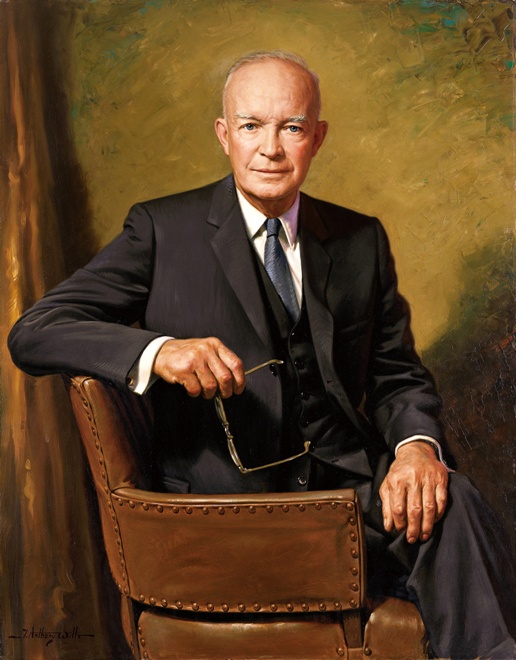John Foster Dulles, Secretary of State, was an ideologist of a kind, investing his conduct of international relations with a moral dimension, presenting conflict with the Soviet Union and China in terms of absolute rights and wrongs and ‘containment’ as a righteous crusade against atheistic Marxism.
Eisenhower daily read ‘Christian Science Monitor.’
Eisenhower’s America was still recognizably derived from the republic of the Founding Fathers. There were still thousands of small towns in the United States where the world of Norman Rockwell was intact and unselfconsciously confident in itself and its values. Patriotism was esteemed. The flag was saluted. The melting-pot was still at work, turning out unhyphenated Americans. Indeed the ‘American Way of Life’ was a term of praise. Upward mobility was the aim. Business success was applauded and identified with the nation’s interests. When Eisenhower appointed Charles Wilson, who was head of General Motors, as Defense Secretary, and he testified at his nomination hearings before the Senate Armed Services Committee, January 15, 1953, he told them, without apology: ‘For years I thought was what good for our country was good for General Motors, and vice versa. The difference does not exist. Our company goes with the welfare of the country.’ No senator dissented. The nomination was unanimously approved.
The most influential writers of the period were the dispensers of uplift. This was an old American tradition, going back at least to Jonathan Edwards, and dispensed in secular form by Emerson. Uplift writing nurtured resolution and self-reliance; it also bred complacency. The latest crop had first sprouted in the Depression, when it was much needed, and overflowed in the Eisenhower era. A tireless worker in the uplift vineyard was Norman Vincent Peale and Ohio Methodist who later embraced the Dutch Reformed Church. He started with You can win (1938), broadened his appeal to include all American religions groups with A guide to confident living (1948), and hit the commercial jackpot in 1952 with The Power of Positive Thinking, which had sold 3 million copies in hardback by 1974. Its chapter heads, ‘I Don’t Believe in Defeat,’ ‘Expect the Best and Get It,’ gave the characteristically American message that there was no problem, personal as well as public, without solution. There were scores of other religious preachers reassuring the public along the same lines.

